'A microcosm of India, inclusive and welcoming'.
For years, Pragati Maidan was the centre of Delhi's social life.
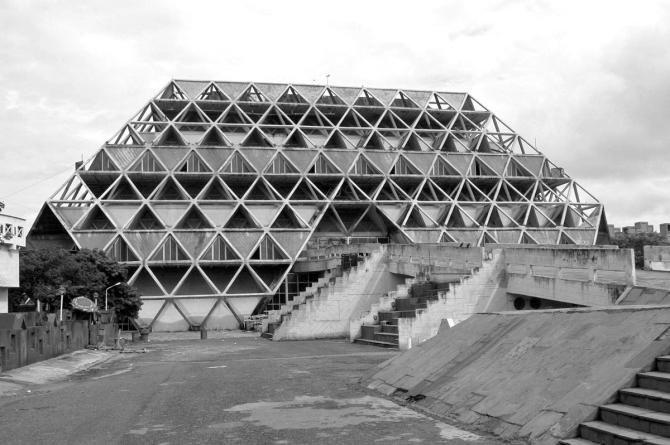
Living cities are in a constant state of change. Sometimes their spaces evolve organically.
At other times, the transition is effected externally.
Spaces leave behind a story as they change, but not all stories are preserved.
Some, though, live on, in private or public records, museums and memories.
Pragati Maidan's is one such story. The space emerged in a glitzy new avatar last month, unrecognisable from the original, with every corner of the redeveloped 123-acre complex shouting 'scale'.
Its showpiece, the International Exhibition-cum-Convention Centre (IECC), now named Bharat Mandapam, is touted to be among the world's top 10 exhibition complexes, its seating capacity of 7,000 larger than the Sydney Opera House in Australia. On display also is cutting-edge technology.
It is as though India is puffing up its chest in pride, pulling out all the stops ahead of the G20 leaders' summit to be hosted at the IECC in September.

Let's turn the clock back though, and revisit the Pragati Maidan that was: A vibrant hub that countries across the world descended on to showcase to India their technological, scientific and intellectual accomplishments.
The venue which the Indian industry went to and displayed its best and latest. The destination Delhi-ites, across age groups and social strata, chose for a day out.
Trade fair? Chalo Pragati Maidan.
Book fair? Chalo Pragati Maidan.
Want to watch a movie or a play or attend a concert? Chalo Pragati Maidan (remember the open-air Hamsadhwani and Falaknuma theatres? Or the Shakuntalam hall, which would screen old classics for a fraction of what you'd pay at any other cinema hall in the capital?).
The kids need an outing? Chalo Pragati Maidan (remember Appu Ghar, India's very own Disneyland named after the endearing 1982 Asian Games baby elephant mascot?).
"There was a certain romance to watching evening shows at the Shakuntalam theatre -- great movies, cheap tickets and less crowd," says Kumar Aditya, who lived some 7 km from Pragati Maidan, went to a Delhi University college and now works with a firm in Gurugram.
"There are hardly any such spaces left in India that are artistic but not commercial," says Aditya, who has just watched Oppenheimer at a houseful multiplex in Gurugram.
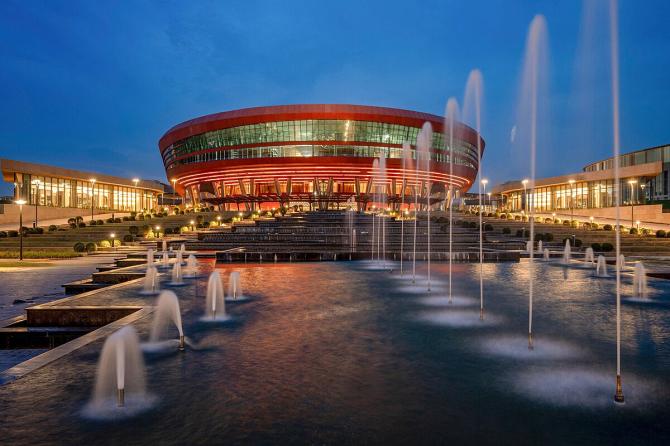
Raj Rewal remembers the birth of Pragati Maidan 50 years ago as though it happened yesterday.
Rewal is the architect who designed the original layout of Pragati Maidan and its main exhibition venue, the iconic Hall of Nations -- India's first pillar-less building and a structure no other country in the world had attempted.
It was 1970. In two years, India would turn 25 as an independent nation.
It wanted to commemorate this milestone as a young country determined to make a mark, globally.
It intended to do so through Asia '72, an international trade fair where industries from around the world would participate.
For this, a venue of scale would be needed. The idea of Pragati Maidan was born.
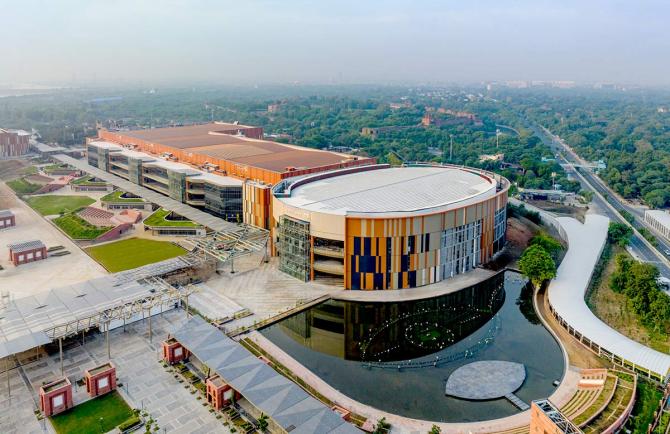
"There was an architectural competition to design it," recounts Rewal, 88, speaking on phone from Paris.
"I was 35 years old (laughs) and had worked on what is called a space frame structure in steel in Paris two years earlier."
He wondered if that could be replicated for a hot place like Delhi. What he came up with would be the world's largest space frame, 86-metre-wide and 100-foot-high -- the Hall of Nations.
"It was to symbolise India's hope and vitality," he says.
"Space frames had all been done in steel earlier," but he discovered quickly that the kind of steel tubes needed would not be available in India at the moment.
"So I started thinking in terms of concrete because we in India were good with concrete." Le Corbusier, the Swiss-French architect who designed Chandigarh, had already successfully built in concrete.
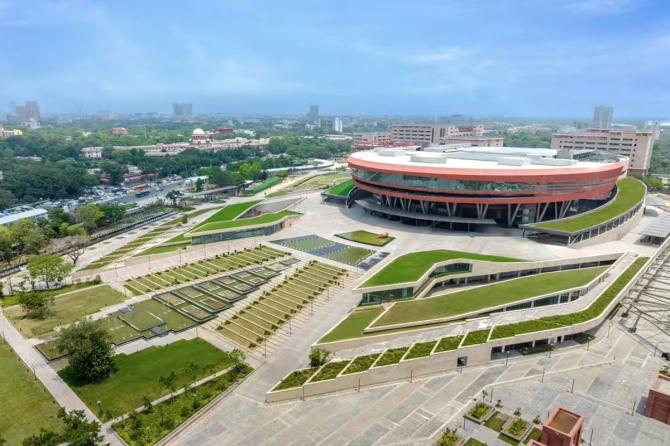
Rewal won the competition, but there was scepticism over whether something of this scale could be pulled off in a year-and-a-half.
Structural engineer and designer Mahendra Raj came on board.
Meanwhile, Rewal used part of his fees to travel the world and explore other structures for possibilities.
"I saw one concrete truss structure, a much smaller one, in Italy and that gave me the confidence that what we were doing was correct," he says.
Chief Engineer Joseph Durai Raj, who had experience in prefabricated structures, built a prototype and work began.
"It was like being in a battlefield," says Rewal, who spent 20-odd hours a day at the site along with his young team.
"Between 300 and 400 workers' families also lived on the site." It was decided that the work would be done in-situ.
"We made what is called shuttering or coffrage, meaning you make a hollow wooden frame and pour concrete and steel bars into it," he says.
"It is very labour intensive. The Western world could never even think of doing it."
What came together, he says, was the result of "fantastic team effort" and the sheer ability of the labour force.
"We are using the word aatmanirbhar now. Well, this was it. This was devised as a structure based on the finest calculations possible, but was handmade."

Pragati Maidan with its Hall of Nations was inaugurated by those who had laboured over it -- two workers, a man and a woman -- on November 3, 1972, ahead of Asia '72.
"Until a week before that nobody thought it would be ready in time, but it was, more or less like the Indian wedding," says Rewal.
It wasn't long before it became the centre of Delhi's social life, an urban space of its kind.
A diplomat who played a key role in establishing Pragati Maidan and promoting trade between India and the world, starting with the Asia '72 fair, was Mohammad Yunus Khan.
Ambassador to Turkey, Indonesia, Iraq and Spain, he headed the Trade Fair Authority of India, now recognised as the India Trade Promotion Organisation (ITPO), the government's Pragati Maidan-headquartered nodal agency for promoting external trade.
Italy, Germany, Japan, Russia, Kenya, Iran, Oman, Brunei... Over the years, delegates and business visitors from all across registered their presence here.
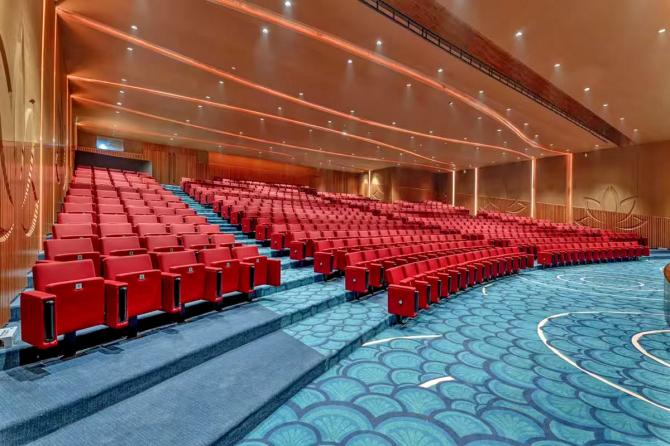
A decade after Asia '72, when India hosted another mega event, the Asian Games, the control room for coordinating its operations and logistics was set up at Pragati Maidan.
Rajiv Gandhi, member of Parliament, was assigned to head a special organising committee constituted to ensure the games went on smoothly.
This was Gandhi's first high-profile public assignment. Aided by Arun Nehru and Arun Singh, he operated out of an office at Pragati Maidan.
"A microcosm of India, inclusive and welcoming," is how an architect, who asked not to be named, describes Pragati Maidan.
"It was like a mela ground, live all year long, with its distinctive pavilions: Bengal, Rajasthan, Odisha..." He recalls going there as a student of architecture with his classmates to study the buildings.
"Everybody had their favourites: Raj Rewal's Hall of Nations, Joseph Allen Stein's creations, the Nehru Pavilion, the Halls of Industries..." All of these structures blended modern design with traditional Indian architecture.
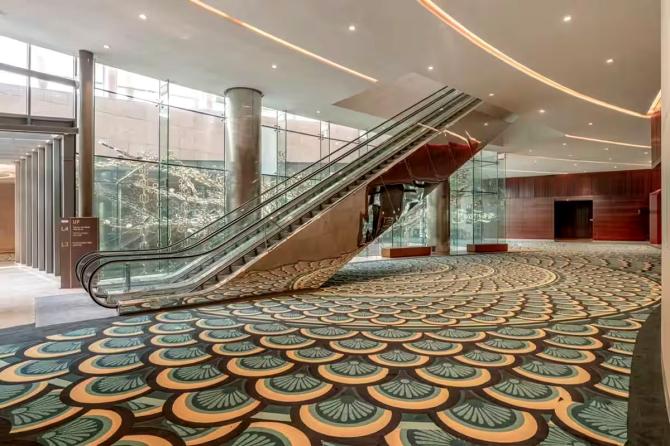
In 2017, these buildings were demolished, to the shock and dismay of many. Models of the Hall of Nations, though, survive, preserved in the Museum of Modern Art (New York), the Centre Pompidou (Paris) and M+ (Hong Kong).
Rewal hopes that one day, the Hall of Nations complex, which has been acclaimed by major museums of the world as a contemporary monument, would be rebuilt -- like the Barcelona Pavilion, a modern classic built in 1929 for the international exposition in Spain, demolished in 1930 and rebuilt in 1986.
For now, Pragati Maidan's history lies documented in records, museums and memories.
Photographs curated by Manisha Kotian/Rediff.com
Feature Presentation: Rajesh Alva/Rediff.com











